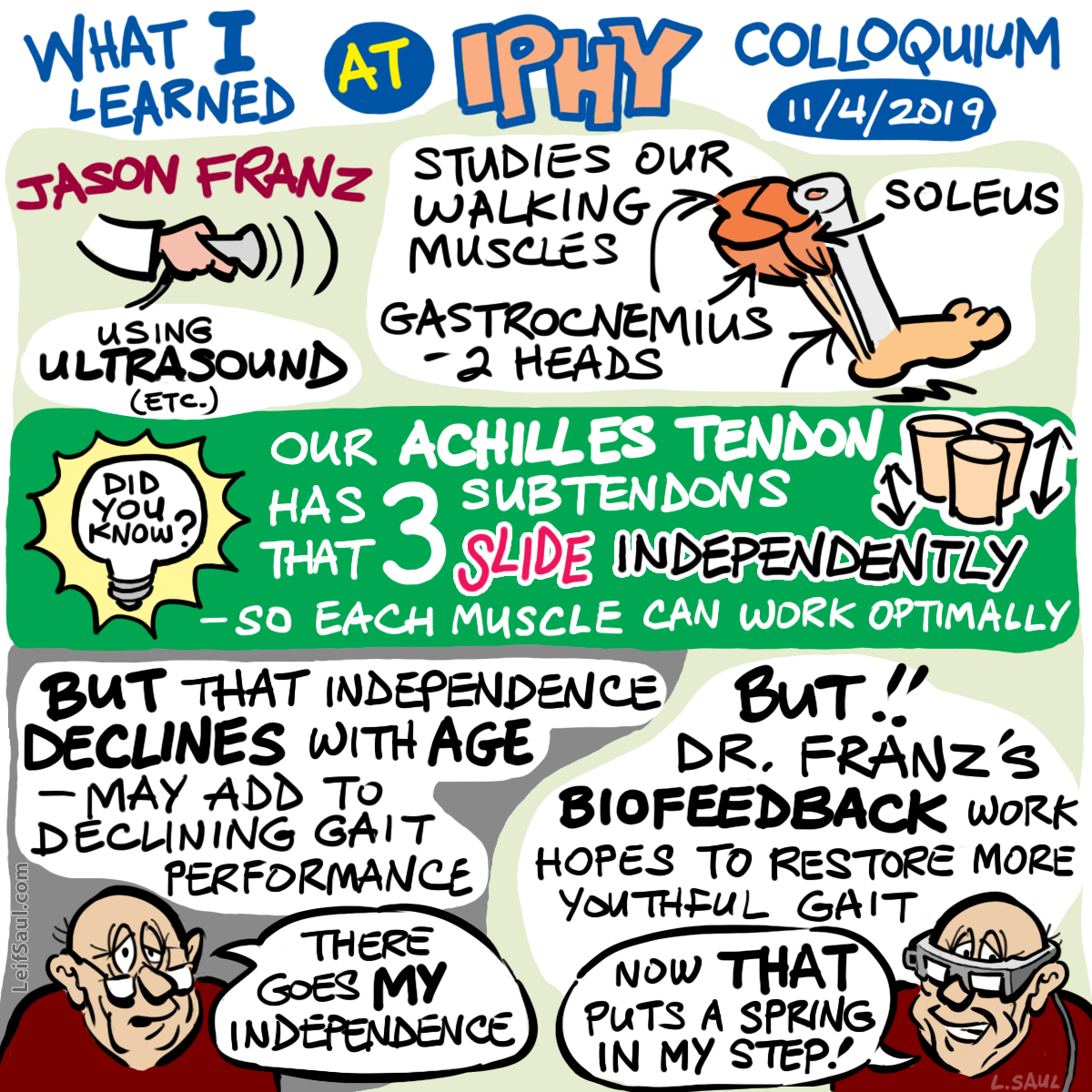
This cartoon summarizes the versatile ways that kangaroo rats deploy their hopping machinery in the desert. It is based on a presentation by Dr. Craig McGowan of his research. In studies of animal movement, biomechanicians often describe the muscles and connective structures using a machine metaphor, which helps to identify key adaptations in how animals get around. Faced with a diverse terrain and hungry rattlesnakes, kangaroo rats use their gastrocnemius or “gastroc” muscle (homologous to our own “calf muscle”) in at least three different ways. These discoveries may also inform future developments in the design of more versatile lower limb prostheses for humans.
Dr. McGowan directs the Comparative Neuromuscular Biomechanics Lab at the University of Idaho. His presentation “Built to Hop: Meeting the Mechanical Demands of Locomotion in the Desert”, was a part of the weekly Colloquium at the Integrative Physiology (IPHY) Department at CU Boulder.

